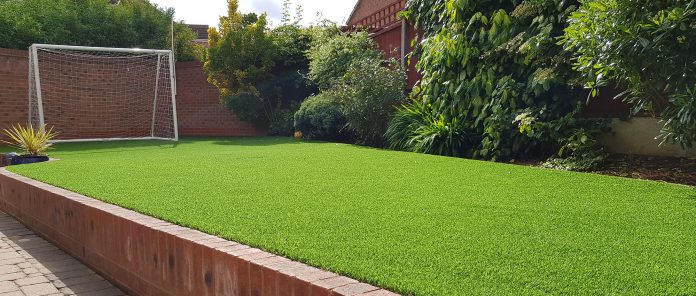A waterlogged lawn is most gardener’s worst nightmare! Usually occurring over winter, heavy rainfall can leave lawns soggy and muddy underfoot. Waterlogging is an occurrence, where water sits on the surface of the soil, failing to drain or doing so very slowly.However, all soils are not made equal and some are more susceptible to waterlogging than others. For example, dense clay soil and badly compacted ground tend to retain rainwater for much longer, which causes sogginess and even temporary flooding.
Heavy rain and poor lawn maintenance often leads to your lawn becoming waterlogged. Waterlogging can lead to your grass wilting, turning yellow and over prolonged periods, dying.
If your lawn has fallen victim to waterlogging, avoid walking on it as much as you can. Follow below ways to cure your waterlogged lawn.
A)Dry the Lawn
It’s impossible to work with mud, so before a water-damaged lawn can be repaired, the excess water needs to evaporate. If dry, sunny weather is in the forecast but puddles persist on the lawn, use a broom to sweep them away. When the soil finally dries to the point of being only moist instead of squishy and saturated, you can get to work. In the meantime, keep people and pets off the affected area as much as possible.
B)Aerate the Lawn
Soil compaction is the most common reason that lawns become waterlogged. Lack of space between soil particles means air and water cannot pass through, so water remains on the surface, saturating the ground and often killing the grass. Rent or purchase a hollow-tined core aerator to improve aeration.
The best machines to repair this kind of damage feature long, hollow tines, spaced six or fewer inches apart, and a heavy body that pushes the tines deep into the soil. The soil must be moist but not soggy for the aerator tines to sink at least 1 inch into it. As the machine rolls across the lawn, it leaves the plugs on the surface. Leave them there, and let the rain dissolve them back into the lawn.
C)Top-Dress With Compost and Sand
Poor soil structure goes hand in hand with low organic content and a dearth of biological activity. After aerating, apply compost either alone or mixed in a 1-to-1 ratio with horticultural sand. Both compost and sand work their way into the voids created by aeration to help maintain an open soil structure. Beneficial microbes in the compost, and the earthworms they attract, continue to loosen the soil particles, improving drainage and promoting healthy plant growth.
D)Grow Deeper Roots
As soil becomes compacted, plant roots die off in the compacted zone. As roots are excluded, the compaction issue becomes worse and soil is more likely to become waterlogged. To eliminate the problem, make deep root development a priority. After aeration and top-dressing with high-quality compost, overseed to address dead zones that have no grass coverage. Keep the area evenly moist during germination. Afterward, develop a routine of deep, infrequent irrigation, rather than daily light watering.
E)Fix a French Drain
Not every wet zone is caused by soil compaction. Low-lying or flat areas of a lawn may be subject to pooling or groundwater seepage because of the lack of slope. In these instances, an underground drainage system may help dry out the area. The fix may be as simple as installing a lightweight prefabricated French drain to move the water away from the problem area. This project requires a nearby sloped area that is lower than the problem site, so the water has a place to flow.
F)Redirect the Runoff
Poorly designed or directed gutter downspouts can lead to a waterlogged lawn. If your house or garage sends excessive amounts of runoff to the yard, use 4-inch PVC pipe, to move the water elsewhere. Dig a shallow trench from the outflow of the downspout to the location where the water needs to go. Be sure to slope the trench away from the house.
G)Make a Dry Creek Bed
Sometimes a simple ditch is all you need to redirect the water, but for greater curb appeal and lower maintenance, you can turn that ditch into a “dry creek bed.” Start by creating a channel that will carry the water downhill and away from the affected area. Then, use landscape fabric and rock of assorted sizes to armor the sides of the channel. Finish it off by planting an assortment of perennials and shrubs to soften the edges and give it a natural look.
































